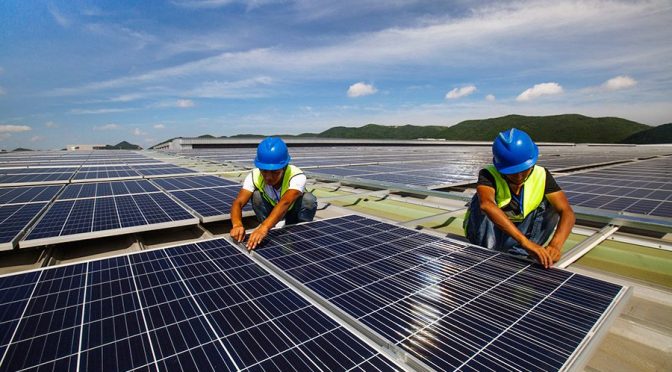China’s photovoltaic industry absolutely ranks first in the globe in terms of not only market size, technology level, production and manufacturing, but also completeness of the industrial chain.
“I’m firmly convinced that the month-on-month decline in PV product exports will not be a long-term trend, but a volatile upward growth trend,” Liu Yiyang, Deputy Secretary General of China Photovoltaic Industry Association (CPIA), said in an interview.
The 2024 Government Work Report released on March 5 showed that the renewable energy power generation installed capacity across China has historically surpassed thermal power, with more than half of the world’s new installed capacity throughout the year. “Considering the importance of PV to the fourth energy revolution,” Liu told China Economic Net (CEN).
“By 2030, global new energy, including PV installed capacity, will triple from the current basis, which has reached a consensus. 2030 is not far away from now, which means that global demand for PV will continue to rise.”
Not long ago, the top five countries with the fastest growing PV power generation installed capacity in 2023 was released. Unsurprisingly, China still ranks first with a huge advantage, while the United States ranks second, with newly installed capacity reaching 33GW throughout the year.
Regarding the US market, Chinese PV companies, especially module manufacturers that have suffered setbacks in Europe last year, are showing an increasingly positive attitude. As Trina Solar announced on September 11 last year that it would invest USD 200 million to build a module plant with an annual production capacity of approximately 5GW in Wilmer, Texas, China’s five module giants (JinkoSolar, LONGi Green Energy, JA Solar Technology, Trina Solar, and Canadian Solar) have all established factories in the US, among which the first US production line layout of JA Solar Technology, Canadian Solar, and Trina Solar was completed in 2023.
In contrast, there has been frequent hype within the EU about desinicization with constant reports that the EU is planning to impose sanctions on Chinese PV companies. In this regard, Liu emphasized, “Through protectionism, implementing so-called import substitution and allowing local industries to replace imports is basically ineffective. History has proven that all countries that implement protectionist measures will eventually be a bitter pill to swallow. At the same time, there are also many voices of opposition within Europe, because these measures are completely unhelpful to its industrial manufacturing level up.”
“In addition, more Belt and Road countries have strong demand for photovoltaics.
For example, Brazil has become our second largest module export market; the South African market has grown significantly and became one of China’s top ten module export markets in the first half of 2023. Many PV companies now attach great importance to Europe, the largest module export market, but their efforts to expand markets in developing countries are far from enough.”
Compared with developed countries, green and low-carbon transformation has stimulated hard demand for PV in developing countries. There are still many areas without electricity in the globe, where need PV companies to promote emerging markets.
Liu told the reporter that if developing countries are helped to develop PV manufacturing, photovoltaic + energy storage and other industries, at least they would achieve great improvements in the application of power infrastructure, and their PV industry will also form a positive cycle. “Undoubtedly, a coin has two sides, thus there are certain risks involved. Support in terms of export credit, export exchange, financing, etc. should be provided by government departments to help companies reduce export risks.”
“What must be emphasized is overcapacity in the PV industry belongs to structural overcapacity, that is to say, insufficient advanced production capacity. The market economy is definitely a surplus economy, due to only with a surplus economy can the fittest survive, and companies would work hard to reduce costs, increase efficiency, and improve product cost-effectiveness. If PV were in a tight shortage, products would not be able to usher in rapid technological iterations. Without the hard work of companies to striving for the upper reaches, China’s global PV ranking will always be out of reach. Therefore, there is no need to be anxious about the development of the industry as soon as you hear overcapacity.
According to the forecast of the Photovoltaic Association, by 2025, the global GW-level national market will exceed 50.
“That is to say, the global demand for PV will still maintain a rapid growth trend,” Liu concluded, and some of the current marginal markets, such as the United Arab Emirates, Saudi Arabia, Egypt, Pakistan, Jordan, Algeria and other North African countries are blue oceans that we urgently need to explore and expand cooperation with. Why? Sunlight is the fairest gift, through which PV could generate electricity, while many developing countries are still facing power shortages, high power costs of the huge trouble. There is an urgent need for low-cost, efficient clean energy in these countries.


